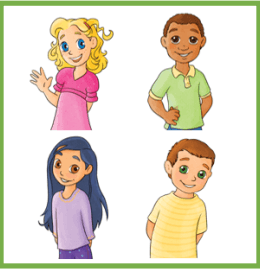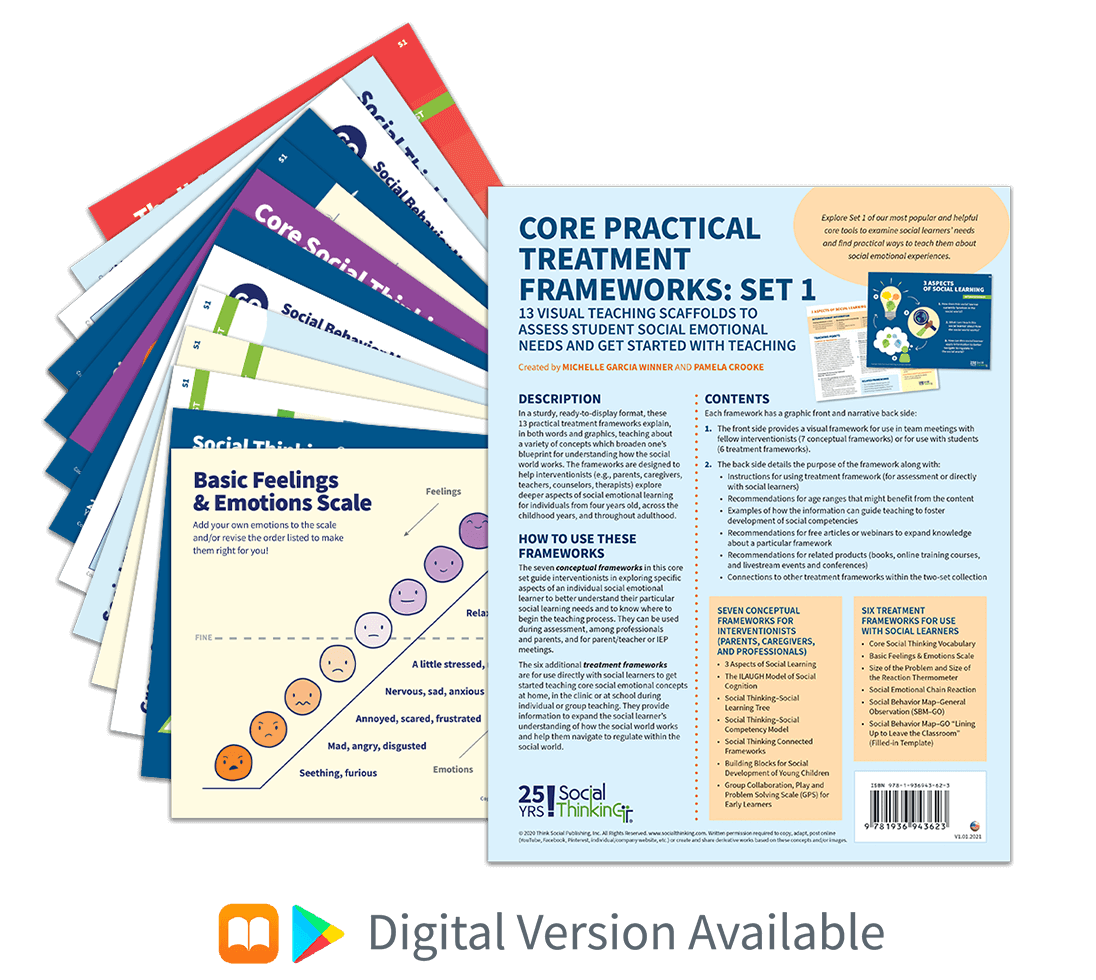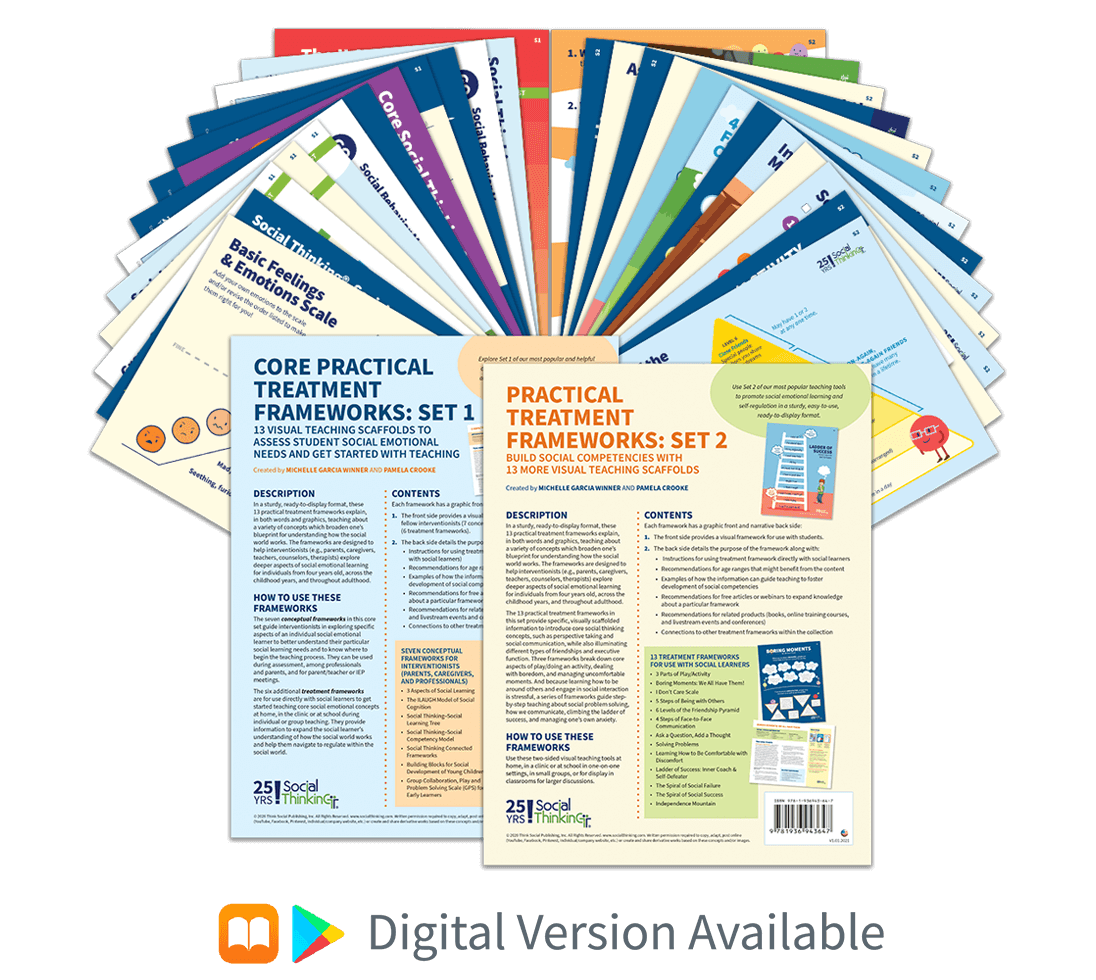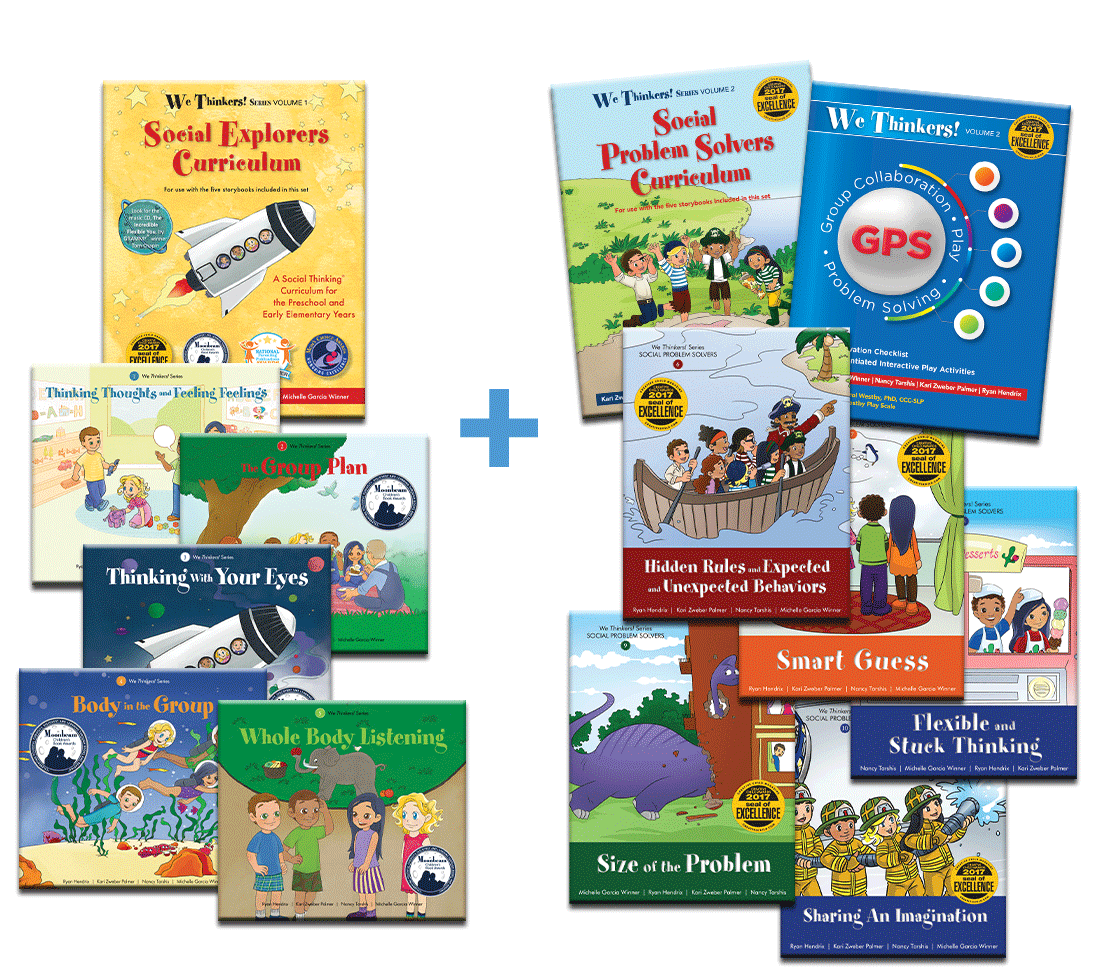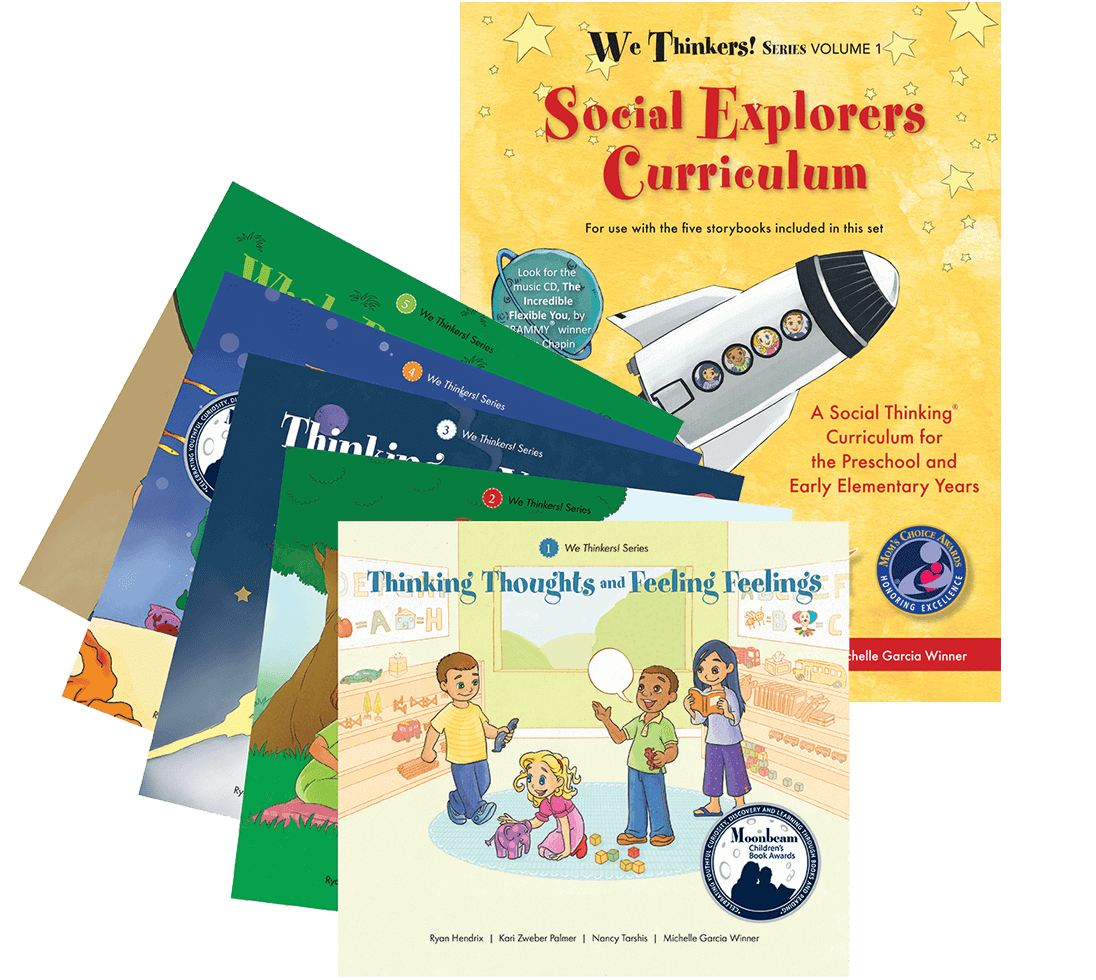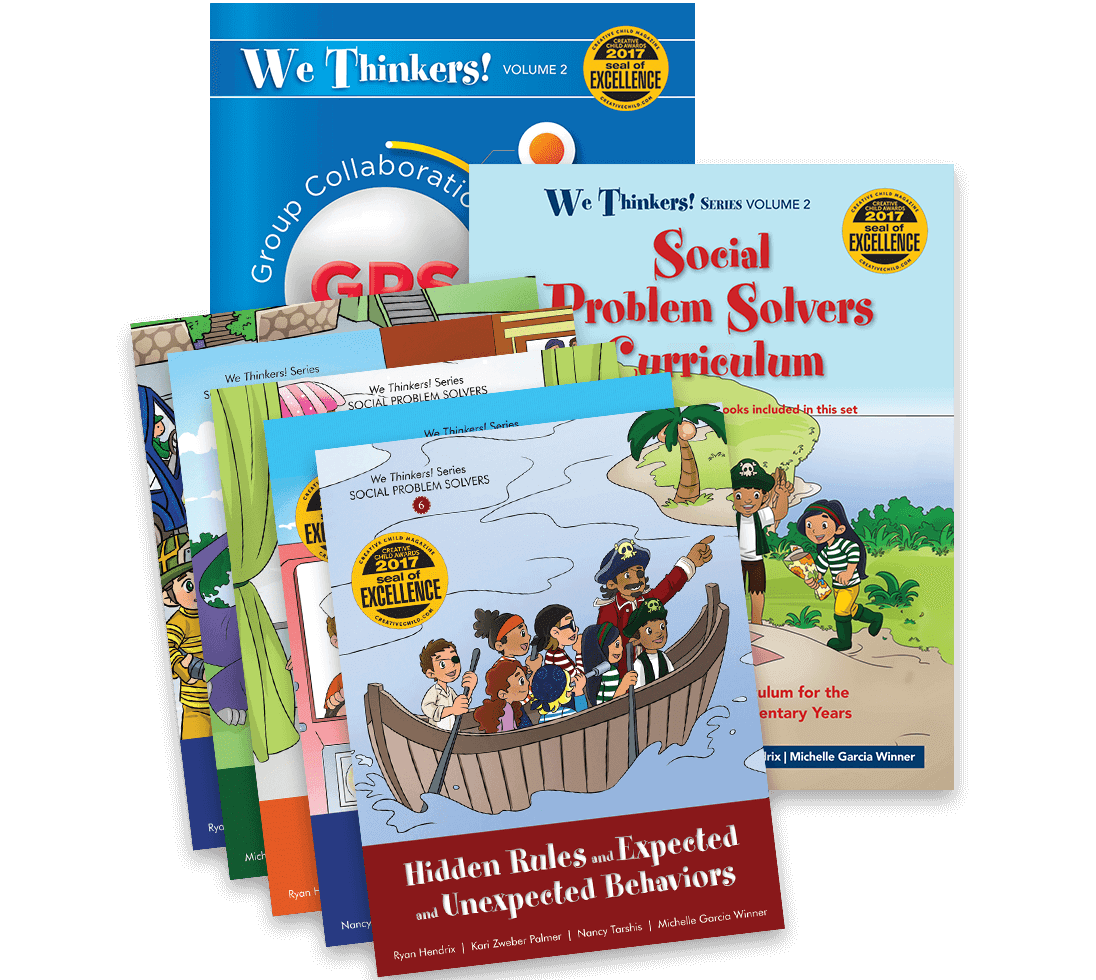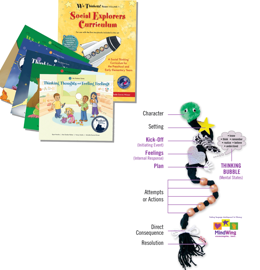Updated: July, 2022
© 2022 Think Social Publishing, Inc.
Social learning is a national education issue; it is not only a special education issue. Many children, not just those with a diagnosis, are arriving at preschool and kindergarten without the requisite skills, social knowledge, and self-regulation skills to exist in the classroom and learn in a group. We need to reorient our thinking and shift the paradigm to incorporate social thinking instruction in general education classes.
Studies continue to demonstrate the benefits of starting education early, and that education is the best way to close the gap for disadvantaged students. It’s also the best way to provide supported collaborative learning and play experiences our children with social cognitive learning differences and/or challenges.
When working at the preschool level we need to avoid the assumption that children naturally learn self-regulation skills to be a part of the group once they enter a classroom environment. In fact, alarming data about preschool activity is quite eye-opening:
- Three- and four-year-olds are more likely than teenagers to get expelled from school.
- A 2005 Yale study found that in state preschool programs across the nation, over 10% of teachers had expelled a student in the previous two months.
- Boys were over four times more likely to be expelled than girls.
- Nearly 5,000 preschoolers were suspended once, and more than 2,500 were suspended more than once.
(Source: U.S. Department of Education, Office for Civil Rights (2012)
Since the release of Volume 1 of our award-winning curriculum for early learners, We Thinkers! Volume 1 Social Explorers we have received accolades from parents and professionals alike for the practical and deep teachings for children ages 4-7. Designed as a multisensory, social-emotional learning package for children who can learn through language, We Thinkers! Volume 1 teaches children about their thoughts and feelings, being part of a group both physically (their bodies) and mentally (their brains), thinking about others, and their own self-regulation. The package includes five colorful storybooks through which children learn a common and more child-friendly language to talk about socially abstract ideas; a curriculum book with lessons and activities aligned with each storybook; plus a full research review on early social development. Grammy®-winning artist Tom Chapin sings 12 lively songs that pair with each social concept introduced and add another dimension to learning. (The music is sold wherever you stream).
We Thinkers! Volume 1 teaches fun and motivating ways to guide and support children in learning about their social selves and their social thinking. To address some of the more frequent questions we receive by email, we've put together this Q&A and hope it helps you better understand how to use this award-winning resource most effectively in your work. Also, explore our online training courses for Early Learners.
1. How is the We Thinkers! curriculum different from social emotional curricula already on the market?
Our curriculum is different in two ways:
- Adults struggle to teach social emotional and social learning concepts to children in large part because they don’t remember learning these concepts themselves. For most of us, social learning came as naturally as learning to walk. However, today’s children are not getting the same access to shared collaborative imaginative play and free play creativity away from technology . All materials developed by Think Social Publishing, Inc. provide a structured scope and sequence that guides adults in understanding and teaching complex layered social concepts in a step-by-step manner.
- We avoid assumptions about our students’ social knowledge and play skills and begin our lessons in a very basic place—one often overlooked in other curricula–by teaching students how to recognize they are learning as part of a group with other people who also have thoughts and feelings. Providing basic social thinking vocabulary (e.g., body in the group, smart guess) helps adults move away from using abstract terms and concepts (e.g., cooperate, be nice, play well). The Social Thinking Vocabulary concepts are easy to learn and easy to apply in teachable moments across the school, home, and community.
2. If we use this curriculum in our classroom, what should be the overall goal of our teaching?
The overall goal is to introduce the concepts and ideas in a fun and interactive way while teaching the importance of maintaining relationships, engaging in collaborative play, and learning as part of a group. The lessons in this curriculum are also a good fit for inclusion-based setting with all students.
3. How is this curriculum aligned with social emotional standards for birth to 5 years old?
This curriculum places important emphasis on self-regulation and social emotional learning as the underlying basis for the core knowledge each child needs. In addition, stressing important abilities, such as sharing an imagination and following the group plan, helps our children stay connected and become better play partners. This is very important because children educated in play-based environments and who spend more time in cooperative play experiences have the added advantage of being stronger problem solvers, more flexible thinkers, and better at collaboration.
4. What components of this curriculum, if any, connect to state standards?
Researchers have shown that engagement in pretend play is significantly (and positively) correlated with text comprehension and meta-linguistic awareness. Many of the fundamental abilities early learners are required to have to meet learning standards include:
- Actively engaging in play as a means of exploration and learning
- Actively engaging in problem solving
- Recognizing themselves as a unique individual having their own abilities, feelings, and interests
- Regulating responses to the needs and feelings of others in different environments
- Developing positive relationships with peers
- Demonstrating pro-social problem-solving skills in social interactions
- Demonstrating a motivation to communicate
- Demonstrating an understanding of their observations
- Demonstrating ability to express ideas
- Participating in collaborative conversations with diverse partners on a range of age topics
5. Who is this curriculum best suited for?
We Thinkers! is a language-based and best for those with average to strong verbal language (including sign, AAC, or written language) and learning abilities. Students should have basic joint attention.
Important: Not all children access play in similar ways. In our work we have found there are many factors such as social attention, object use, and engagement with peers that impact a child's ability to play. In Volume 2 of the curriculum, we address this in the Social Thinking GPS™ (Group Play and Problem-Solving Scale). We have delineated five distinct levels of play and differentiated teaching strategies that coordinate with each of these different levels. Also included is a Social Thinking GPS checklist to guide parents and professionals to observe how students move from exploring the vocabulary concepts to using these concepts in complex ways with others, which we refer to as Shared Collaborative Imaginative Play.
6. Does the curriculum provide information for parents, caregivers, or home support?
The curriculum includes a general family letter that introduces the curriculum and individual family letters that align with each lesson. These include suggested activities to explore the concepts outside the classroom. In addition, the music is a wonderful tool to continue the learning in the car and at home as families go about their day. We encourage educators and therapists to share the letters with families and encourage them to use the music and complete the activities at home. The five-storybook set is also sold separately so parents can carry over the learning from school to home.









